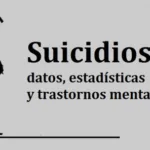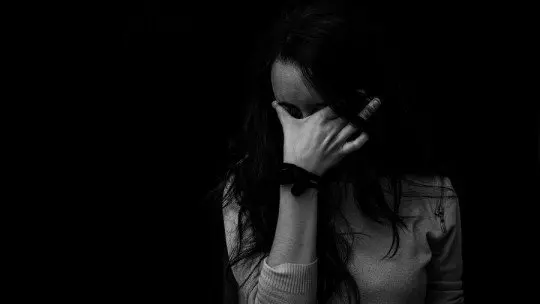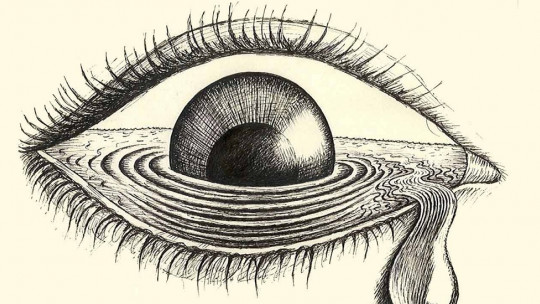
According to sources such as the World Health Organization (WHO), more than 800,000 deaths occur by suicide worldwide each year. In Spain, according to the National Institute of Statistics (INE), suicide is the leading cause of unnatural death in Spain, even above traffic accidents.
Therefore, it is necessary to establish a prevention plan to help people who need it, with young people (between 14 and 30 years old) and older people being especially vulnerable, the latter being a very vulnerable group and in which they have The number of suicide cases has increased significantly.
It is because of that Next we will talk about suicide in older peopleexplaining the risk factors and some prevention guidelines.
Characteristics of suicide in older people
Suicide has always been a topic that is rarely talked about, becoming a taboo topic within society, despite the fact that It is today the main cause of unnatural deathsurpassing traffic accidents.
There is some discouraging data related to suicide in older people, including the following:
The most characteristic factors of suicide in older people are those cited below:

Main risk factors for suicide in old age
Below we will explain the risk factors main causes of suicide in older people, that is, phenomena that are probabilistically associated with this behavior even though they do not have to lead to it or be the main cause.
1. Medical factors
Between medical factors (organic alterations in the functioning of the body) Closely associated with a risk of suicide in older people, the following stand out:
2. Psychological factors
Psychological factors play a very important role in the suicide arena in older people, as well as in the rest of the population, highlighting the following psychological conditions:
- Suffering from any type of depressive disorder or bipolar disorder.
- Abuse alcohol and/or any type of drug.
- Suffering from some type of chronic sleep disorder.
- Suffering from a paranoid delusional psychosis, also having great distrust and agitation.
- Suffer psychological confusion.
- Suffer from a personality disorder that seriously affects your daily life.
- Having feelings of uselessness and/or loneliness, without having tasks that make you feel useful.
- Inactivity and/or boredom.
- Lack of projects and objectives in your life.
- Having a desire to die because you think that life is no longer worth living.
- Not having social relationships that are satisfactory, which can increase your feeling of loneliness.
There are numerous studies that have documented that depression is strongly associated with suicide, being the main risk factor and the most frequent cause among suicides that have occurred in all ages.
In the case of elderly people, it is more complicated to diagnose depression than in younger people, and it tends to present in older people as atypical depression, which is why fewer cases of depression have been detected than are estimated to exist in reality. , so in many cases it is not treated correctly and that increases the risk of suicide.
To detect a case of depression in the elderly, when an atypical form of depressionwe must be attentive to different aspects than in younger people, such as the following: apathy or lack of motivation to do things that they previously liked to do, complaints of feeling alone and hopeless, more somatic complaints or feeling more pain than usual, and there may be less direct verbalization of feeling vital sadness, so it is more appropriate to detect depression indirectly through this series of complaints.
- Related article: “Depression in old age: causes, detection, therapy and advice”
3. Family factors
Family factors are very important, especially at these ages, when the degree of dependence on others increases.so they are also risk factors for suicide in older people, worth highlighting those that we will list below:
-
Loss of loved ones, especially if it is a child.
- Continuous change of place of residence, when your children take turns caring for you and you have to move.
- Admission to a nursing home, especially when you do not feel well treated.
- Suffering a traumatic event in relation to a family member (e.g., accident involving a family member).
- To stay widowed.
- When the children and grandchildren are not going to visit him.
- Spend most of your time alone.
- Suffering from abuse by a family member or caregiver.
4. Social, environmental and economic factors
Socio-environmental and economic factors also They are very relevant to a person’s quality of life.so they can also be risk factors for suicide in older people, highlighting the following:
- Being in a bad financial situation, so you cannot cover essential expenses.
- Having a poor quality of life, having a lack of basic goods.
- Not having decent housing or even sleeping on the streets or in shelters.
- Not having sufficient autonomy to do a series of basic tasks.
- Feeling that you have lost your dignity by being unable to perform tasks that you previously did.
Covert suicide in older people
Covert suicide is a form of suicide in which It is difficult to distinguish if the person died due to an accident or if it was actually a suicide.
Numerous cases of covert suicide have been detected in older people, with the following forms being the most common of this way of carrying out suicide.
1. Domestic accidents
There are many cases of deaths due to a domestic accident that could have been caused intentionally by the elderly person, so it is a covert suicide and the coroner, not having enough evidence to prove the cause, could declare a domestic accident as the cause of death.
2. Drug overdose
As is the case with domestic accidents, when a death occurs due to a drug overdose, it is also very difficult to know if it was the result of an oversight or if it was done intentionally in order to produce what can happen. called covert suicide.
On the other hand, the opposite could arise, and it is that the elderly person intentionally does not take the medication they need and neglects themselves in other aspectsso this can gradually deteriorate your health, causing a more premature death than if you maintained a healthy lifestyle and took the medication as instructed by your doctor.
3. Drowning
There are studies carried out on several cases of drowning in various countries in which the a large number of cases of covert suicide by drowning in elderly people in Japanalso detecting cases in other countries
In all of the above cases, it is very difficult to prove whether the death of the elderly person has been caused by a covert suicide or, on the other hand, the cause of death is an oversight that caused an accident, which is why in many cases of covert suicide it is has declared that the cause of death was due to an accident, while there have also been cases of death by accident that have been declared a suicide.
- Related article: “Covert suicide: what it is, characteristics and examples”
Suicide prevention in older people
It is important detect a series of aspects and behaviors to prevent suicide in older peoplehighlighting the following:
- Assessment by a doctor or psychologist of the risk of suicide.
- Detect symptoms or behaviors that suggest depression.
- Control and treat as much as possible any painful, chronic or disabling illness.
- Make sure the older person sees a mental health specialist if necessary.
- Check that the elderly person takes all their medications correctly.
- Make sure that the elderly person does not abuse alcohol or any type of medication.
- Ensure that the elderly maintain a healthy lifestyle.
- Ensure that the elderly person makes regular medical visits and does not miss any medical appointments.
- Ensure that the elderly person does not isolate themselves, being able to participate in day centers for the elderly.
- Ensure that the elderly stay active and do activities that they like.
- Make sure the older person has an active social life.
- That your family cares about the elderly person and spends time with them is a prevention factor.
Warning signs
You should pay attention to these warning signs that can act as risk factors for suicide in older people:
- He verbally expresses that he does not want to live any longer.
- You are often nervous, apathetic or unmotivated.
- He verbally complains that he is no longer worth anything.
- You are more tired than usual.
- You feel more irritable or restless than normal.
- You no longer enjoy doing activities that you used to enjoy.
- He verbally complains that no one loves him.
- I eat less or more than usual
- Frequently complains of stomachaches, headaches or chronic pain.
- He has frequent requests to go to the doctor, and may not suffer anything.
- He cries very frequently, sometimes even for no apparent reason.
- Self-harm is caused.
- Sudden changes in your mood.
It is important to take all these signs seriously and pay attention to them and even seek professional help.. You have to listen to him and try to understand how he feels, so that he realizes that he is supported by his loved ones.
It is also important that these people do not spend a lot of time alone and make sure they know that we are there for whatever they need. Furthermore, you have to be delicate when scolding them for something they have done wrong, trying not to raise your voice. Older people must be helped to feel valid for themselves.








